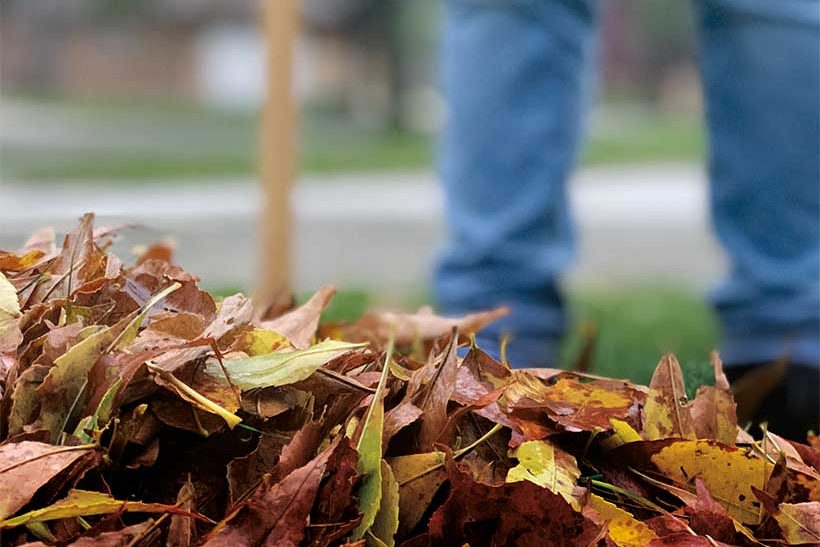With summer displays over and leaves falling thick and fast, now is the perfect time for a thorough garden tidy up, advises Benedict Vanheems
Autumn is when nature takes a breather, allowing us gardeners to finally catch up! Things have quietened down in the garden and the natural world is preparing for the winter ahead. It’s an opportunity to take stock of the past year and lay the groundwork for an even stronger performance in the next. It all begins with an autumn clean. Here are a few jobs to add – and tick off! – your to-do list.
Border patrol
Begin by methodically working through your borders. Cut back very straggly growth and the old, dead stems of herbaceous perennials back to the ground. Not too fast though: Old stems, especially hollow stems, offer safe places for beneficial bugs like ladybirds to hibernate, so leave a few plants untouched till spring.
Once you’ve trimmed and tidied you will be able to see the weeds among your plants. Make a final push to pull them up. Be meticulous in digging out the roots of perennial weeds like bindweed and couch grass to stop them re-growing. Pop the roots into a bucket of water to break down into a slop. They’ll then be safe to add to the compost bin.
Lift tender perennials like dahlias, geraniums and cannas before the first hard frosts. Cut back stems to a short stump then dig them up with a fork. Shake off as much soil from the roots as you can then pack them into trays of slightly damp compost. Store them out of direct sunlight in a cool but frost-free place, ready for next spring.
Finish off cleared beds with a mulch of compost or well-rotted manure. This will feed the soil and the worms in it, creating a healthier environment for roots to explore. This extra layer should also help to insulate roots from the worst of the winter chill.
If you have a vegetable plot clear away any spent crops. Pull up, wipe down and store supports such as bamboo canes, and don’t forget to order seed catalogues for the new season – essential reading on a dark winter’s night.
Lawns and leaves
Lawns will probably need a final mow before the grass stops growing. Longer grass copes better with the cold, so set lawnmower blades high for this end-of-season cut. Use an edging tool such as a half moon or sharp knife to neaten up edges and give a crisp, neat finish. Falling leaves keep us busy throughout autumn – where do they all come from? But leaves are garden riches! Use a spring tine rake to gather them up from lawns, paths and other hard surfaces (but leave them on beds and borders for the worms to ‘dig’ in for you). Collected leaves can then be stashed in an out-of-the-way corner to rot down into leaf mould, a fantastic soil improver. Contain leaves using chicken wire secured to four corner posts, or simply stuff leaves into bin bags with holes punched into them for aeration. Leaf mould takes about two years to mature, though the part-decomposed leaves will be just fine to spread as a mulch around plants from next summer.
Clearing the decks for future growth is always satisfying. Your garden will be primed and ready to burst back into life as soon as spring arrives. In the meantime, enjoy the simplicity and calm of this peaceful time of year.
DON’T FORGET
Wash pots: Minimise the risk of pests and diseases overwintering. Wash pots and containers in soapy water. Use a kitchen brush or scrubber to remove engrained dirt.
Check tools: Sharpen the cutting blade of tools like hoes and secateurs. Inspect, clean and oil tools as appropriate before hanging them up under cover.
Repair jobs: Carry out those repairs you’ve been putting off. Now is the time to do something about that sagging shed doors or rotten raised bed
Pick it up: Items left lying around outside, such as old pots or compost bags, are a haven for slugs. Remove or put them away
Bird boxes: With birds fledged it’s safe to clean out bird boxes. Use hot water and be sure to get into all the corners. Wash and refill bird feeders and baths..



